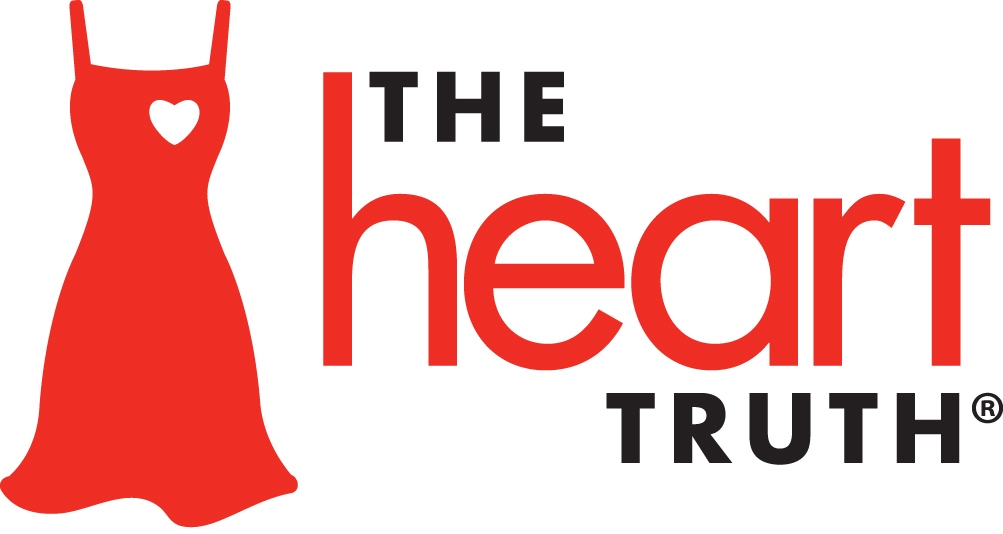 Today is National Wear Red Day®, which is celebrated annually on the first Friday of February. The American Heart Association (AHA), HHS, the National Heart, Lung, and Blood Institute (NHLBI), and many other organizations celebrate and promote National Wear Red Day to raise awareness about women’s heart disease and the fact that it is largely preventable. Heart disease is the #1 cause of death of women.
Today is National Wear Red Day®, which is celebrated annually on the first Friday of February. The American Heart Association (AHA), HHS, the National Heart, Lung, and Blood Institute (NHLBI), and many other organizations celebrate and promote National Wear Red Day to raise awareness about women’s heart disease and the fact that it is largely preventable. Heart disease is the #1 cause of death of women.
This post will discuss the National Wear Red Day and Heart Truth® campaign, what heart disease is as well as statistics, risk factors and prevention.
NATIONAL WEAR RED DAY AND THE HEART TRUTH CAMPAIGN
National Wear Red Day is part of The Heart Truth campaign whose goal is to “put a face on heart disease” and motivate women and health professionals to take heart health seriously and engage in action to reduce women’s risk of heart disease. This campaign seeks to:
- Increase awareness that heart disease is the #1 killer of women;
- Increase awareness that having risk factors can lead to heart disease, disability, or death; and
- Encourage women to talk to their doctors about heart disease risk factors and to take action to prevent or control these risk factors.
 The logo for The Heart Truth campaign is The Red Dress®. The message it is intended to convey is to: Link a woman’s focus on her “outer self” to the need to also focus on her “inner self,” especially her heart health. The Red Dress serves as a red alert to convey the message that “Heart Disease Doesn’t Care What You Wear—It’s the #1 Killer of Women.®”
The logo for The Heart Truth campaign is The Red Dress®. The message it is intended to convey is to: Link a woman’s focus on her “outer self” to the need to also focus on her “inner self,” especially her heart health. The Red Dress serves as a red alert to convey the message that “Heart Disease Doesn’t Care What You Wear—It’s the #1 Killer of Women.®”
Women are encouraged to wear red dresses or clothing today while, for men, red clothing or red ties.
WHAT IS HEART DISEASE?
As defined by the AHA, “Heart disease,” also called coronary heart disease, is: “A simple term used to describe several problems related to plaque buildup in the walls of the arteries, or atherosclerosis.” Some common types of heart disease include:
- Heart Attack
- Stroke
- Transient Ischemic Attack (TIA)
- Heart Failure (congestive heart failure);
- Arrhythmia
- Heart Valve Problems
- Hypertension (High Blood Pressure)
- Hardening of the Arteries (atherosclerosis)
To determine whether you have heart disease, and the type, diagnostic testing is usually required.
WOMEN’S HEART DISEASE STATISTICS
The AHA’s site, goredforwomen.org, provides some scary statistics for women about heart disease. These include:
- Heart disease is the No. 1 killer of women;
- Heart disease is more deadly than all forms of cancer combined;
- Heart disease causes 1 in 3 women’s deaths each year
- Heart disease kills approximately one woman every minute;
- An estimated 43 million women in the United States are affected by heart disease;
- 90% of women have one or more risk factors for developing heart disease;
- Since 1984, more women than men have died each year from heart disease;
- The symptoms of heart disease may be different in women and men;
- The symptoms of heart disease are often misunderstood;
- Only 1 in 5 American women believe that heart disease is her greatest health threat;
- Women comprise only 24% of participants in all heart-related studies; and
- The risks of developing heart disease for Hispanic and African American women are even higher than Caucasian women.
Although today is focused on women and heart health, the statistics for men and heart disease are equally troubling. According to the Centers for Disease Control and Prevention (CDC):
- 1 out of every 4 male deaths were caused by heart disease;
- Heart disease is the leading cause of death for men of most racial/ethnic groups in the United States, including African Americans, American Indians or Alaska Natives, Hispanics, and whites. For Asian American or Pacific Islander men, heart disease is second only to cancer;
- About 8.5% of all white men, 7.9% of African American men, and 6.3% of Mexican American men have coronary heart disease;
- 50% of men who die suddenly of coronary heart disease have no previous symptoms; and
- Between 70% and 89% of sudden cardiac events occur in men.
These statistics should bring awareness to the problems of heart disease for everyone.
RISK FACTORS FOR HEART DISEASE
According to the NHLBI, the risk factors for heart disease include:
- High blood pressure;
- High blood cholesterol;
- Diabetes and prediabetes;
- Smoking;
- Overweight/obesity;
- Physical inactivity;
- Family history of early coronary heart disease;
- A history of preeclampsia during pregnancy;
- Unhealthy diet; and
- Age (for women, 55 and older).
The infographic, Are You at Risk for Heart Disease?, from the NHLBI, also lists some of the items that increases a woman’s risk of developing heart disease.
Many of these risk factors are the same for men.
WHAT YOU CAN DO TO PREVENT HEART DISEASE
The CDC and other organizations suggest the following to prevent heart disease: Live a healthy lifestyle; and Prevent or treat your medical conditions. More specific recommendations include:
- Eat a healthy diet;
- Maintain a healthy weight;
- Exercise regularly;
- Do not smoke;
- Limit alcohol use;
- Manage stress; and
- Monitor and check your blood pressure and cholesterol.
As part of National Wear Red Day, HHS suggests people take action and pledge to commit to the following, many of which are included above:
- Don’t smoke and, if you do, quit. Talk with your health care provider about programs and products that can help you quit smoking;
- Aim for a healthy weight – it is important for a long, vigorous life;
- Get moving – make a pledge to be more physically active;
- Plan to eat heart healthy – limit saturated and trans fats, cholesterol, sodium (salt), and added sugars;
- Learn how to manage stress and relax; and
- Talk to your doctor about your personal risks.
When talking to your doctor, here are some questions the Center for Disease Control and Prevention (CDC) suggests you might want to consider asking:
- What is my risk for heart disease?
- What is my blood pressure? What does it mean for me, and what do I need to do about it?
- What are my cholesterol numbers? (These include total cholesterol, LDL or “bad” cholesterol, HDL or “good” cholesterol, and triglycerides.) What do they mean for me, and what do I need to do about them?
- What is my “body mass index” and waist measurement? Do they indicate that I need to lose weight for my health?
- What is my blood sugar level, and does it mean I’m at risk for diabetes?
- What other screening tests for heart disease do I need? How often should I return for checkups for my heart health?
- What can you do to help me quit smoking?
- How much physical activity do I need to help protect my heart?
- What is a heart-healthy eating plan for me? Should I see a registered dietitian or qualified nutritionist to learn more about healthy eating?
- How can I tell if I’m having a heart attack?
These questions are not limited to women; men should be asking the same questions of their doctors.
SOURCES AND NOTICES
Information and some of the images for this post are from the following sources:
- American Heart Association:
- Centers for Disease Control and Prevention:
- Go Red For Women: Heart Disease Statistics at a Glance
- National Heart, Lung, and Blood Institute:
- Monique Ndenecho / United States Department of Health and Human Services: National Wear Red Day®: Protect Your Heart Health
The following notices are required for usage of some of the phrases in this post and images in this post due to trademark and other issues:
- “National Wear Red Day” is a registered trademark of HHS and the American Heart Association.
- “Heart Disease Doesn’t Care What You Wear—It’s the #1 Killer of Women” is a registered trademark of the U.S. Department of Health and Human Services.
- “The Heart Truth” is a registered trademark of the U.S. Department of Health and Human Services.
- “The Heart Truth” logo is a registered trademark of the U.S. Department of Health and Human Services
- “The Red Dress” and “Red Dress” is a registered trademark of the U.S. Department of Health and Human Services.
- Participation by Lapin Law Offices in in promoting The Heart Truth campaign or National Wear Red Day does not imply endorsement by HHS/NIH/NHLBI.
The information contained within this post is for informational purposes only. It should not to be used or relied on for any diagnostic or treatment purposes nor as a substitute for professional diagnosis and treatment. Please consult your health care provider before making any healthcare decisions or for guidance about a specific medical condition.
LAPIN LAW OFFICES
Lapin Law Offices supports National Wear Red Day and the Heart Truth campaign and encourages everyone to wear red, and more importantly, help reduce the number of deaths caused by heart disease, both for women and men, through education and action.

![Are You at Risk for Heart Disease? [Infographic]](https://lapinlawoffices.com/wp-content/uploads/2015/02/are-you-at-risk-for-heart-disease-infographic.jpg)
